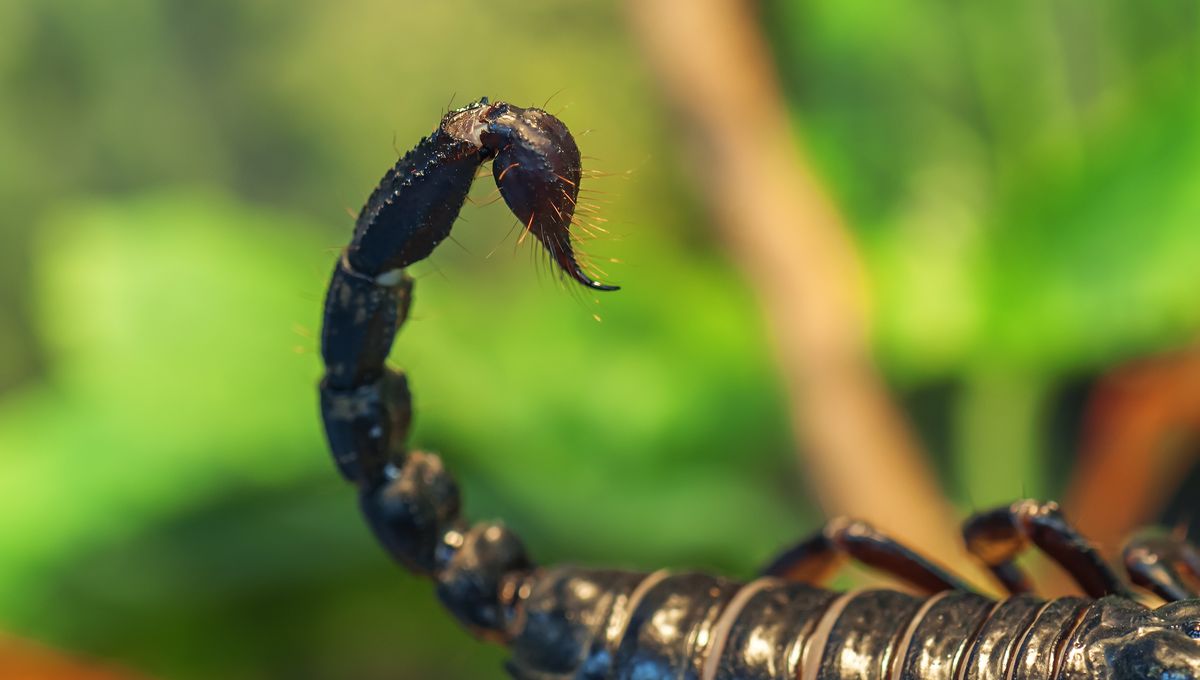
Species that possess venom are some of the most badass in the animal world. Now, a new member has joined their ranks – a scorpion from Columbia that represents the first venom-spraying species of scorpion reported both in South America and in the genus it belongs to.
ADVERTISEMENT GO AD FREE
The new species has been called Tityus achilles after the Greek mythological figure of Achilles and his competent use of a spear. It is the 230th member of the genus Tityus and is found in the broadleaf rainforest of Magdalena Valley in Cundinamarca, Columbia, where it seems to spend its time on the forest floor, rather than in the trees as other species that occur in the same area are known to do.
To learn more about how this species uses its venom, researcher Léo Laborieux recorded 46 venom pulses using a high frame rate camera. In doing so, the study author identified two types of airborne defense when it comes to spraying, each with a different level of reach and a different level of venom.
The two types of venom spraying were defined as: venom flicks, which consist of a single droplet projected a short distance, and venom sprays, which are more sustained. Out of all the venom spraying in the experiment, 14 flicks and 24 sprays were used by the scorpions.
The results also show that like other scorpions, the venom secretions used in the experiment change in composition after subsequent pulses. Initially, a clear pre-venom is used, and then after five or so pulses, the secretion becomes white and opaque. The maximum distance the spraying venom reached was approximately 36 centimeters (14 inches).
Creating and creating venom takes a lot of energy from the animal and is typically used solely in predation events or in self-defense. There are only a few animals capable of spraying their venom and only two genera of scorpions.
“Scorpions have to raise their metabolism enormously to produce venom. For them, it’s like running a marathon,” evolutionary biologist Dr Arie van der Meijden of the CIBIO-InBIO Institute in Portugal, who was not involved in this study, told IFLScience. “It takes a lot of effort to make it, but then they never use quite so much.”
ADVERTISEMENT GO AD FREE
The experiment featured only juvenile scorpions, so questions remain about whether there are differences in these two venom tactics between sub-adults and adults. Laborieux also hypothesizes that comparing venom spraying between different genera of venom-spraying scorpions could advance our understanding of its evolution and specialization within these creatures.
The study is published in the Zoological Journal of the Linnean Society.
Source Link: Brand New Species Of Scorpion Is A Venom Spraying Badass From Columbia